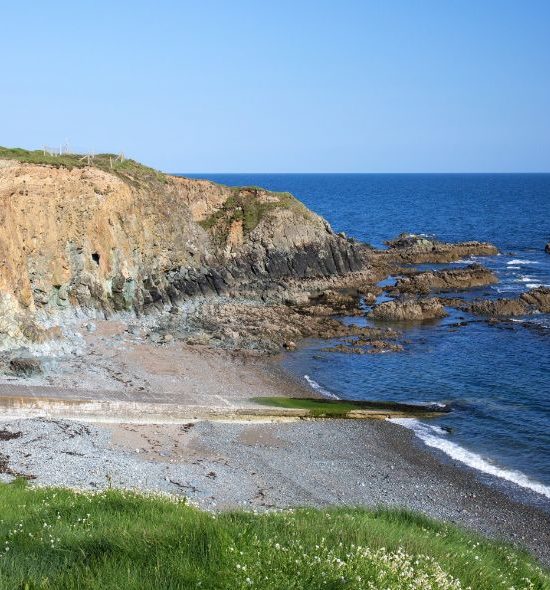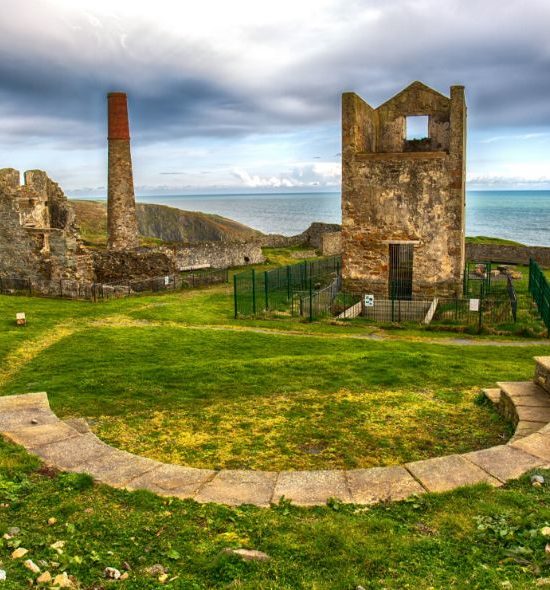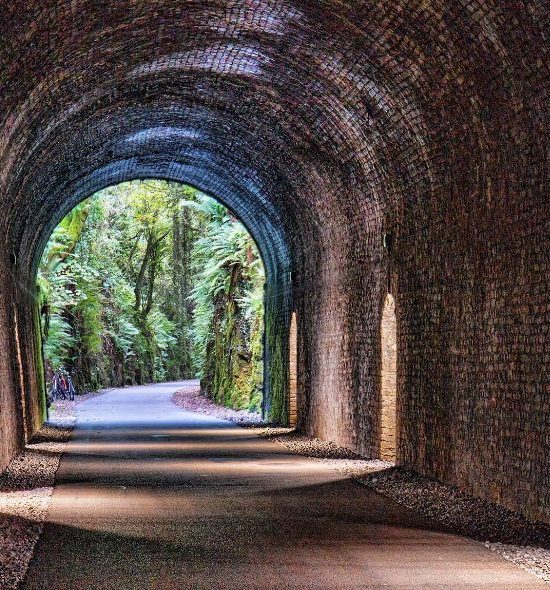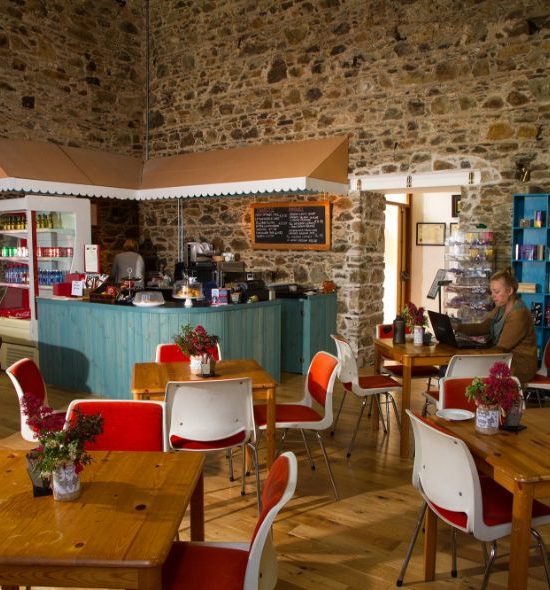Dunhill Castle
Co Waterford | Ireland
GeoSite
Echoes of history whisper through the ancient stones.
Explore the rich heritage and stunning coastal views at Dunhill Castle.
A captivating geosite nestled within the picturesque Copper Coast UNESCO Global Geopark.
Location
Waterford | Ireland
Access
The castle is easily accessible via the grass trail leading from the car park at its base
Area
Dunhill
Parking
Yes
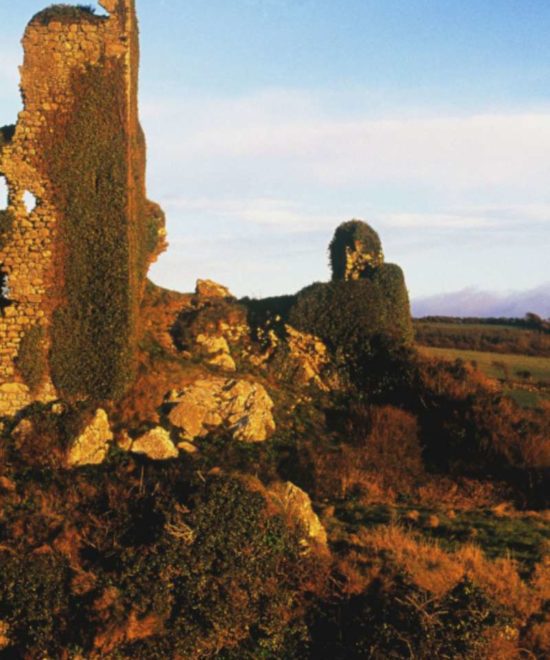
Discover
Dunhill Castle
Embark on a journey through time and nature's breathtaking beauty at Dunhill Castle, an enchanting gem nestled along the Copper Coast UNESCO Global Geopark. Step into the past as you wander through the remnants of this medieval fortress, where echoes of history whisper through the ancient stones.
Marvel at the panoramic views of the rugged coastline, where dramatic cliffs meet the endless expanse of the sparkling sea. Immerse yourself in the tranquillity of the surrounding countryside, where lush greenery and rolling hills create a serene backdrop for exploration and relaxation.
Whether you're a history enthusiast, a nature lover, or simply seeking an escape from the hustle and bustle of everyday life, Dunhill Castle offers a captivating experience that will leave you spellbound.
Come and discover the magic of this unique destination, where every moment is infused with the spirit of adventure and discovery.
Marvel at the panoramic views of the rugged coastline, where dramatic cliffs meet the endless expanse of the sparkling sea. Immerse yourself in the tranquillity of the surrounding countryside, where lush greenery and rolling hills create a serene backdrop for exploration and relaxation.
Whether you're a history enthusiast, a nature lover, or simply seeking an escape from the hustle and bustle of everyday life, Dunhill Castle offers a captivating experience that will leave you spellbound.
Come and discover the magic of this unique destination, where every moment is infused with the spirit of adventure and discovery.
COPPER COAST GEOSITES
Learn about the connected geological, historical and cultural heritage of our area.
Geological System/Age and Primary Rock Type
The fort on the hill.
The name of near by Dunhill is derived from the Irish translation of the “fort of the rock”. The impressive silhouette of the castle which sits on the rock today comprises only about half a fifteenth century tower with bits of outer walls dating to the early thirteenth century.
The name of near by Dunhill is derived from the Irish translation of the “fort of the rock”. The impressive silhouette of the castle which sits on the rock today comprises only about half a fifteenth century tower with bits of outer walls dating to the early thirteenth century.
Main Geological or Geomorphological Interest
Seat of the Power Family
The castle had an interesting and chequered history. The la Poer’s (Power) of Dunhill were infamous in the 14th century, as they launched many attacks on Waterford City. In 1345 they destroyed the area around city but were counter-attacked, taken prisoner and hanged. The remaining members of the Power clan join forces with the O’ Driscoll family. This alliance would attack nearby Waterford many times over the next 100 years, with both success and failure. After a defeat in Tramore in 1368 the castle passed to the Powers of Kilmeaden. It remained in their control until the Cromwellian attack on Dunhill and its first capture (legend of gunners and buttermilk) in 1649.
Sacked By Cromwell
Once regarded as impregnable, the castle was besieged and sacked, with the outer defences destroyed as well as tower beside the church. Fate of last Lord of Dunhill and Kilmeaden, John Power, and his family were unknown. The Castle and lands were then given to Sir John Cole with the church given to Waterford Corporation. Cole and his decedents never lived in the castle and the church was disused, with the result that timbers rotted and both fell into ruins during the 1700’s.More deterioration was recorded in 1912 when the east wall of the castle collapsed during a storm.
The castle had an interesting and chequered history. The la Poer’s (Power) of Dunhill were infamous in the 14th century, as they launched many attacks on Waterford City. In 1345 they destroyed the area around city but were counter-attacked, taken prisoner and hanged. The remaining members of the Power clan join forces with the O’ Driscoll family. This alliance would attack nearby Waterford many times over the next 100 years, with both success and failure. After a defeat in Tramore in 1368 the castle passed to the Powers of Kilmeaden. It remained in their control until the Cromwellian attack on Dunhill and its first capture (legend of gunners and buttermilk) in 1649.
Sacked By Cromwell
Once regarded as impregnable, the castle was besieged and sacked, with the outer defences destroyed as well as tower beside the church. Fate of last Lord of Dunhill and Kilmeaden, John Power, and his family were unknown. The Castle and lands were then given to Sir John Cole with the church given to Waterford Corporation. Cole and his decedents never lived in the castle and the church was disused, with the result that timbers rotted and both fell into ruins during the 1700’s.More deterioration was recorded in 1912 when the east wall of the castle collapsed during a storm.
Safety and Access
The castle is easily accessible via the grass trail leading from the car park at its base. However care must be taken around the ruins as they not fenced or safe for children to play around unattended.
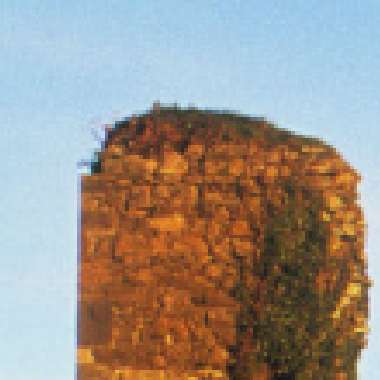
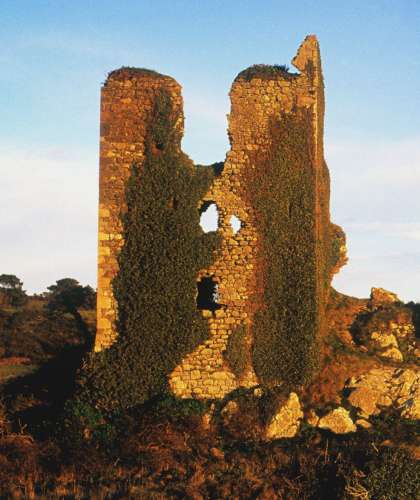
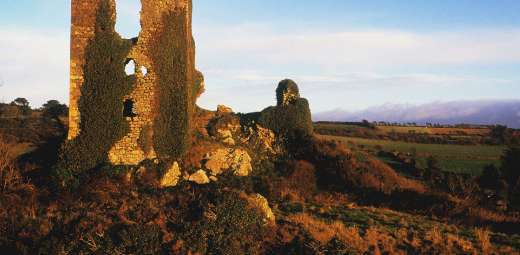
Welcome To Our Community!
Stay connected with the latest updates, exclusive offers, and exciting news by subscribing to our newsletter.
Discover Our Journey Through the Gallery
Join us on an exciting journey as we capture the essence of the Copper Coast through our social media channels.
Follow our adventures as we traverse stunning landscapes and immerse ourselves in the wonders of time and nature.
Interactive Map
Explore the Copper Coast with Our Interactive Geosites Map
Discover Every Geological Treasure and Heritage Site Across the Copper Coast UNESCO Global Geopark.
eyJtYXBfb3B0aW9ucyI6eyJjZW50ZXJfbGF0IjoiNTIuMTQ0NjgzNDI2NzMzMjYiLCJjZW50ZXJfbG5nIjoiLTcuMzY0MzM4OTQwNTI2NzkyIiwiem9vbSI6MTIsIm1hcF90eXBlX2lkIjoiUk9BRE1BUCIsImNlbnRlcl9ieV9uZWFyZXN0IjpmYWxzZSwiZml0X2JvdW5kcyI6ZmFsc2UsImNlbnRlcl9jaXJjbGVfZmlsbGNvbG9yIjoiIzhDQUVGMiIsImNlbnRlcl9jaXJjbGVfZmlsbG9wYWNpdHkiOiIuNSIsImNlbnRlcl9jaXJjbGVfc3Ryb2tlY29sb3IiOiIjOENBRUYyIiwiY2VudGVyX2NpcmNsZV9zdHJva2VvcGFjaXR5IjoiLjUiLCJzaG93X2NlbnRlcl9jaXJjbGUiOmZhbHNlLCJzaG93X2NlbnRlcl9tYXJrZXIiOmZhbHNlLCJjZW50ZXJfbWFya2VyX2ljb24iOiJodHRwczpcL1wvY29wcGVyY29hc3RnZW9wYXJrLmNvbVwvd3AtY29udGVudFwvcGx1Z2luc1wvd3AtZ29vZ2xlLW1hcC1nb2xkXC9hc3NldHNcL2ltYWdlc1wvXC9kZWZhdWx0X21hcmtlci5wbmciLCJkcmFnZ2FibGUiOnRydWUsInNjcm9sbF93aGVlbCI6InRydWUiLCJnZXN0dXJlIjoiYXV0byIsIm1hcmtlcl9kZWZhdWx0X2ljb24iOiJodHRwczpcL1wvY29wcGVyY29hc3RnZW9wYXJrLmNvbVwvd3AtY29udGVudFwvdXBsb2Fkc1wvMjAyNFwvMDhcL0NvcHBlckNvYXN0LW1hcC1waW4yLTEucG5nIiwiaW5mb3dpbmRvd19zZXR0aW5nIjoiPGRpdiBjbGFzcz1cImZjLW1haW5cIj5cbjxkaXYgY2xhc3M9XCJmYy1pdGVtLXRpdGxlXCI+e21hcmtlcl90aXRsZX0gPHNwYW4gY2xhc3M9XCJmYy1iYWRnZSBpbmZvXCI+e21hcmtlcl9jYXRlZ29yeX08XC9zcGFuPjxcL2Rpdj5cbjxkaXYgY2xhc3M9XCJmYy1pdGVtLWZlYXR1cmVkX2ltYWdlXCI+e21hcmtlcl9pbWFnZX0gPFwvZGl2PlxuPHA+e21hcmtlcl9tZXNzYWdlfTxcL3A+XG48YWRkcmVzcz48Yj5BZGRyZXNzIDogPFwvYj57bWFya2VyX2FkZHJlc3N9PFwvYWRkcmVzcz5cbjxcL2Rpdj5cbiIsImluZm93aW5kb3dfZ2VvdGFnc19zZXR0aW5nIjoiPGRpdiBjbGFzcz1cImZjLW1haW5cIj48ZGl2IGNsYXNzPVwiZmMtaXRlbS10aXRsZVwiPntwb3N0X3RpdGxlfSA8c3BhbiBjbGFzcz1cImZjLWJhZGdlIGluZm9cIj57cG9zdF9jYXRlZ29yaWVzfTxcL3NwYW4+PFwvZGl2PiA8ZGl2IGNsYXNzPVwiZmMtaXRlbS1mZWF0dXJlZF9pbWFnZVwiPntwb3N0X2ZlYXR1cmVkX2ltYWdlfSA8XC9kaXY+e3Bvc3RfZXhjZXJwdH08YWRkcmVzcz48Yj5BZGRyZXNzIDogPFwvYj57bWFya2VyX2FkZHJlc3N9PFwvYWRkcmVzcz48YSB0YXJnZXQ9XCJfYmxhbmtcIiBjbGFzcz1cImZjLWJ0biBmYy1idG4tc21hbGwgZmMtYnRuLXJlZFwiIGhyZWY9XCJ7cG9zdF9saW5rfVwiPlJlYWQgTW9yZS4uLjxcL2E+PFwvZGl2PiIsImluZm93aW5kb3dfc2tpbiI6eyJuYW1lIjoiZGVmYXVsdCIsInR5cGUiOiJpbmZvd2luZG93Iiwic291cmNlY29kZSI6IiZsdDtkaXYgY2xhc3M9JnF1b3Q7ZmMtbWFpbiZxdW90OyZndDsmbHQ7ZGl2IGNsYXNzPSZxdW90O2ZjLWl0ZW0tdGl0bGUmcXVvdDsmZ3Q7e21hcmtlcl90aXRsZX0gJmx0O3NwYW4gY2xhc3M9JnF1b3Q7ZmMtYmFkZ2UgaW5mbyZxdW90OyZndDt7bWFya2VyX2NhdGVnb3J5fSZsdDtcL3NwYW4mZ3Q7Jmx0O1wvZGl2Jmd0OyAmbHQ7ZGl2IGNsYXNzPSZxdW90O2ZjLWl0ZW0tZmVhdHVyZWRfaW1hZ2UmcXVvdDsmZ3Q7e21hcmtlcl9pbWFnZX0gJmx0O1wvZGl2Jmd0O3ttYXJrZXJfbWVzc2FnZX0mbHQ7YWRkcmVzcyZndDsmbHQ7YiZndDtBZGRyZXNzIDogJmx0O1wvYiZndDt7bWFya2VyX2FkZHJlc3N9Jmx0O1wvYWRkcmVzcyZndDsmbHQ7XC9kaXYmZ3Q7In0sImluZm93aW5kb3dfcG9zdF9za2luIjp7Im5hbWUiOiJkZWZhdWx0IiwidHlwZSI6InBvc3QiLCJzb3VyY2Vjb2RlIjoiJmx0O2RpdiBjbGFzcz0mcXVvdDtmYy1tYWluJnF1b3Q7Jmd0OyZsdDtkaXYgY2xhc3M9JnF1b3Q7ZmMtaXRlbS10aXRsZSZxdW90OyZndDt7cG9zdF90aXRsZX0gJmx0O3NwYW4gY2xhc3M9JnF1b3Q7ZmMtYmFkZ2UgaW5mbyZxdW90OyZndDt7cG9zdF9jYXRlZ29yaWVzfSZsdDtcL3NwYW4mZ3Q7Jmx0O1wvZGl2Jmd0OyAmbHQ7ZGl2IGNsYXNzPSZxdW90O2ZjLWl0ZW0tZmVhdHVyZWRfaW1hZ2UmcXVvdDsmZ3Q7e3Bvc3RfZmVhdHVyZWRfaW1hZ2V9ICZsdDtcL2RpdiZndDt7cG9zdF9leGNlcnB0fSZsdDthZGRyZXNzJmd0OyZsdDtiJmd0O0FkZHJlc3MgOiAmbHQ7XC9iJmd0O3ttYXJrZXJfYWRkcmVzc30mbHQ7XC9hZGRyZXNzJmd0OyZsdDthIHRhcmdldD0mcXVvdDtfYmxhbmsmcXVvdDsgY2xhc3M9JnF1b3Q7ZmMtYnRuIGZjLWJ0bi1zbWFsbCBmYy1idG4tcmVkJnF1b3Q7IGhyZWY9JnF1b3Q7e3Bvc3RfbGlua30mcXVvdDsmZ3Q7UmVhZCBNb3JlLi4uJmx0O1wvYSZndDsmbHQ7XC9kaXYmZ3Q7In0sImluZm93aW5kb3dfZHJvcF9hbmltYXRpb24iOmZhbHNlLCJjbG9zZV9pbmZvd2luZG93X29uX21hcF9jbGljayI6ZmFsc2UsImRlZmF1bHRfaW5mb3dpbmRvd19vcGVuIjpmYWxzZSwiaW5mb3dpbmRvd19vcGVuX2V2ZW50IjoibW91c2VvdmVyIiwibGlzdGluZ19pbmZvd2luZG93X29wZW5fZXZlbnQiOiJjbGljayIsImlzX21vYmlsZSI6ZmFsc2UsImluZm93aW5kb3dfZmlsdGVyX29ubHkiOmZhbHNlLCJpbmZvd2luZG93X2NsaWNrX2NoYW5nZV96b29tIjowLCJpbmZvd2luZG93X2NsaWNrX2NoYW5nZV9jZW50ZXIiOmZhbHNlLCJmdWxsX3NjcmVlbl9jb250cm9sIjpmYWxzZSwic2VhcmNoX2NvbnRyb2wiOnRydWUsInpvb21fY29udHJvbCI6dHJ1ZSwibWFwX3R5cGVfY29udHJvbCI6ZmFsc2UsInN0cmVldF92aWV3X2NvbnRyb2wiOmZhbHNlLCJsb2NhdGVtZV9jb250cm9sIjpmYWxzZSwibW9iaWxlX3NwZWNpZmljIjpmYWxzZSwiem9vbV9tb2JpbGUiOjUsImRyYWdnYWJsZV9tb2JpbGUiOnRydWUsInNjcm9sbF93aGVlbF9tb2JpbGUiOnRydWUsImZ1bGxfc2NyZWVuX2NvbnRyb2xfcG9zaXRpb24iOiJUT1BfUklHSFQiLCJzZWFyY2hfY29udHJvbF9wb3NpdGlvbiI6IlRPUF9MRUZUIiwibG9jYXRlbWVfY29udHJvbF9wb3NpdGlvbiI6IlRPUF9MRUZUIiwiem9vbV9jb250cm9sX3Bvc2l0aW9uIjoiVE9QX0xFRlQiLCJtYXBfdHlwZV9jb250cm9sX3Bvc2l0aW9uIjoiVE9QX1JJR0hUIiwibWFwX3R5cGVfY29udHJvbF9zdHlsZSI6IkRST1BET1dOX01FTlUiLCJzdHJlZXRfdmlld19jb250cm9sX3Bvc2l0aW9uIjoiVE9QX0xFRlQiLCJtYXBfY29udHJvbCI6ZmFsc2UsInNjcmVlbnMiOnsic21hcnRwaG9uZXMiOnsibWFwX3pvb21fbGV2ZWxfbW9iaWxlIjoiNSJ9LCJpcGFkcyI6eyJtYXBfem9vbV9sZXZlbF9tb2JpbGUiOiI1In0sImxhcmdlLXNjcmVlbnMiOnsibWFwX3pvb21fbGV2ZWxfbW9iaWxlIjoiNSJ9fSwibWFwX2luZm93aW5kb3dfY3VzdG9taXNhdGlvbnMiOmZhbHNlLCJpbmZvd2luZG93X3dpZHRoIjoiMTAwJSIsImluZm93aW5kb3dfYm9yZGVyX2NvbG9yIjoicmdiYSgwLCAwLCAwLCAwLjA5ODAzOTIpIiwiaW5mb3dpbmRvd19iZ19jb2xvciI6IiNmZmYiLCJzaG93X2luZm93aW5kb3dfaGVhZGVyIjpmYWxzZSwibWluX3pvb20iOiIxMiIsIm1heF96b29tIjoiMTkiLCJ6b29tX2xldmVsX2FmdGVyX3NlYXJjaCI6IjEyIiwidXJsX2ZpbHRlcnMiOmZhbHNlLCJkb3VibGVjbGlja3pvb20iOmZhbHNlLCJjdXJyZW50X3Bvc3Rfb25seSI6ZmFsc2UsImJvdW5kX21hcF9hZnRlcl9maWx0ZXIiOmZhbHNlLCJkaXNwbGF5X3Jlc2V0X2J1dHRvbiI6ZmFsc2UsIm1hcF9yZXNldF9idXR0b25fdGV4dCI6IlJlc2V0IiwiaGVpZ2h0IjoiNDUwIn0sInBsYWNlcyI6W3siaWQiOiIyIiwidGl0bGUiOiJCYWxseWR3YW4gQmF5IiwiYWRkcmVzcyI6IkJhbGx5ZG93YW5lIEJheSwgSXJlbGFuZCIsInNvdXJjZSI6Im1hbnVhbCIsImNvbnRlbnQiOiJDbyBXYXRlcmZvcmQgfCBJcmVsYW5kXHJcbjxicj48YnI+XHJcbiA8YSBocmVmPVwiaHR0cHM6XC9cL2NvcHBlcmNvYXN0Z2VvcGFyay5jb21cL2Nhc2VcL2JhbGx5ZHdhbi1iYXlcL1wiPlZpZXcgR2Vvc2l0ZTxcL2E+IiwibG9jYXRpb24iOnsiaWNvbiI6Imh0dHBzOlwvXC9jb3BwZXJjb2FzdGdlb3BhcmsuY29tXC93cC1jb250ZW50XC91cGxvYWRzXC8yMDI0XC8wOFwvQ29wcGVyQ29hc3QtbWFwLXBpbjItMS5wbmciLCJsYXQiOiI1Mi4xMjk1MTcxOTk5OTk5OSIsImxuZyI6Ii03LjQxMTQ1MDciLCJjb3VudHJ5IjoiSXJlbGFuZCIsIm9uY2xpY2tfYWN0aW9uIjoibWFya2VyIiwib3Blbl9uZXdfdGFiIjoieWVzIiwiZHJhZ2dhYmxlIjpmYWxzZSwiaW5mb3dpbmRvd19kZWZhdWx0X29wZW4iOmZhbHNlLCJpbmZvd2luZG93X2Rpc2FibGUiOnRydWUsInpvb20iOjUsImV4dHJhX2ZpZWxkcyI6eyJsaXN0b3JkZXIiOjB9fX0seyJpZCI6IjMiLCJ0aXRsZSI6IkR1bmFicmF0dGluIEhlYWRcL0JvYXRzdHJhbmQgSGFyYm91ciIsImFkZHJlc3MiOiJEdW5hYnJhdHRpbiBIZWFkLCBJcmVsYW5kIiwic291cmNlIjoibWFudWFsIiwiY29udGVudCI6IkNvIFdhdGVyZm9yZCB8IElyZWxhbmRcclxuPGJyPjxicj5cclxuIDxhIGhyZWY9XCJodHRwczpcL1wvY29wcGVyY29hc3RnZW9wYXJrLmNvbVwvY2FzZVwvZHVuYWJyYXR0aW4taGVhZC1ib2F0c3RyYW5kLWhhcmJvdXJcL1wiPlZpZXcgR2Vvc2l0ZTxcL2E+IiwibG9jYXRpb24iOnsiaWNvbiI6Imh0dHBzOlwvXC9jb3BwZXJjb2FzdGdlb3BhcmsuY29tXC93cC1jb250ZW50XC91cGxvYWRzXC8yMDI0XC8wOFwvQ29wcGVyQ29hc3QtbWFwLXBpbjItMS5wbmciLCJsYXQiOiI1Mi4xMzMzMzMzIiwibG5nIjoiLTcuMzA3MjIyMiIsInN0YXRlIjoiQ291bnR5IFdhdGVyZm9yZCIsImNvdW50cnkiOiJJcmVsYW5kIiwib25jbGlja19hY3Rpb24iOiJtYXJrZXIiLCJvcGVuX25ld190YWIiOiJ5ZXMiLCJkcmFnZ2FibGUiOmZhbHNlLCJpbmZvd2luZG93X2RlZmF1bHRfb3BlbiI6ZmFsc2UsImluZm93aW5kb3dfZGlzYWJsZSI6dHJ1ZSwiem9vbSI6NSwiZXh0cmFfZmllbGRzIjp7Imxpc3RvcmRlciI6MH19fSx7ImlkIjoiNCIsInRpdGxlIjoiRHVuaGlsbCBDYXN0bGUiLCJhZGRyZXNzIjoiRHVuaGlsbCBDYXN0bGUsIElyZWxhbmQiLCJzb3VyY2UiOiJtYW51YWwiLCJjb250ZW50IjoiQ28gV2F0ZXJmb3JkIHwgSXJlbGFuZFxyXG48YnI+PGJyPlxyXG4gPGEgaHJlZj1cImh0dHBzOlwvXC9jb3BwZXJjb2FzdGdlb3BhcmsuY29tXC9jYXNlXC9kdW5oaWxsLWNhc3RsZVwvXCI+VmlldyBHZW9zaXRlPFwvYT4iLCJsb2NhdGlvbiI6eyJpY29uIjoiaHR0cHM6XC9cL2NvcHBlcmNvYXN0Z2VvcGFyay5jb21cL3dwLWNvbnRlbnRcL3VwbG9hZHNcLzIwMjRcLzA4XC9Db3BwZXJDb2FzdC1tYXAtcGluMi0xLnBuZyIsImxhdCI6IjUyLjE2MjY1NzE3Mzk1OTEiLCJsbmciOiItNy4yNjI4MDU2NDY4MjEzOCIsIm9uY2xpY2tfYWN0aW9uIjoibWFya2VyIiwib3Blbl9uZXdfdGFiIjoieWVzIiwiZHJhZ2dhYmxlIjpmYWxzZSwiaW5mb3dpbmRvd19kZWZhdWx0X29wZW4iOmZhbHNlLCJpbmZvd2luZG93X2Rpc2FibGUiOnRydWUsInpvb20iOjUsImV4dHJhX2ZpZWxkcyI6eyJsaXN0b3JkZXIiOjB9fX0seyJpZCI6IjUiLCJ0aXRsZSI6IkZlbm9yIEJvZyIsImFkZHJlc3MiOiJGZW5vciBCb2csIElyZWxhbmQiLCJzb3VyY2UiOiJtYW51YWwiLCJjb250ZW50IjoiQ28gV2F0ZXJmb3JkIHwgSXJlbGFuZFxyXG48YnI+PGJyPlxyXG4gPGEgaHJlZj1cImh0dHBzOlwvXC9jb3BwZXJjb2FzdGdlb3BhcmsuY29tXC9jYXNlXC9mZW5vci1ib2dcL1wiPlZpZXcgR2Vvc2l0ZTxcL2E+IiwibG9jYXRpb24iOnsiaWNvbiI6Imh0dHBzOlwvXC9jb3BwZXJjb2FzdGdlb3BhcmsuY29tXC93cC1jb250ZW50XC91cGxvYWRzXC8yMDI0XC8wOFwvQ29wcGVyQ29hc3QtbWFwLXBpbjItMS5wbmciLCJsYXQiOiI1Mi4xNjIwNzE2MjgxODAyMiIsImxuZyI6Ii03LjIyNTg5ODU0MjI2NDY4MSIsIm9uY2xpY2tfYWN0aW9uIjoibWFya2VyIiwib3Blbl9uZXdfdGFiIjoieWVzIiwiZHJhZ2dhYmxlIjpmYWxzZSwiaW5mb3dpbmRvd19kZWZhdWx0X29wZW4iOmZhbHNlLCJpbmZvd2luZG93X2Rpc2FibGUiOnRydWUsInpvb20iOjUsImV4dHJhX2ZpZWxkcyI6eyJsaXN0b3JkZXIiOjB9fX0seyJpZCI6IjYiLCJ0aXRsZSI6IkdhcnJhcnVzIFN0cmFuZCIsImFkZHJlc3MiOiJHYXJyYXJ1cyBTdHJhbmQsIElyZWxhbmQiLCJzb3VyY2UiOiJtYW51YWwiLCJjb250ZW50IjoiQ28gV2F0ZXJmb3JkIHwgSXJlbGFuZFxyXG48YnI+PGJyPlxyXG4gPGEgaHJlZj1cImh0dHBzOlwvXC9jb3BwZXJjb2FzdGdlb3BhcmsuY29tXC9jYXNlXC9nYXJyYXJ1cy1zdHJhbmRcL1wiPlZpZXcgR2Vvc2l0ZTxcL2E+IiwibG9jYXRpb24iOnsiaWNvbiI6Imh0dHBzOlwvXC9jb3BwZXJjb2FzdGdlb3BhcmsuY29tXC93cC1jb250ZW50XC91cGxvYWRzXC8yMDI0XC8wOFwvQ29wcGVyQ29hc3QtbWFwLXBpbjItMS5wbmciLCJsYXQiOiI1Mi4xNDQ1ODY5MDgzMjE5NCIsImxuZyI6Ii03LjIwMjEwNzMwOTQ2MjkwMiIsIm9uY2xpY2tfYWN0aW9uIjoibWFya2VyIiwib3Blbl9uZXdfdGFiIjoieWVzIiwiZHJhZ2dhYmxlIjpmYWxzZSwiaW5mb3dpbmRvd19kZWZhdWx0X29wZW4iOmZhbHNlLCJpbmZvd2luZG93X2Rpc2FibGUiOnRydWUsInpvb20iOjUsImV4dHJhX2ZpZWxkcyI6eyJsaXN0b3JkZXIiOjB9fX0seyJpZCI6IjciLCJ0aXRsZSI6IkdhdWxzdG93biBEb2xtZW4iLCJhZGRyZXNzIjoiR2F1bHN0b3duIERvbG1lbiwgSXJlbGFuZCIsInNvdXJjZSI6Im1hbnVhbCIsImNvbnRlbnQiOiJDbyBXYXRlcmZvcmQgfCBJcmVsYW5kXHJcbjxicj48YnI+XHJcbiA8YSBocmVmPVwiaHR0cHM6XC9cL2NvcHBlcmNvYXN0Z2VvcGFyay5jb21cL2Nhc2VcL2dhdWxzdG93bi1kb2xtZW5cL1wiPlZpZXcgR2Vvc2l0ZTxcL2E+IiwibG9jYXRpb24iOnsiaWNvbiI6Imh0dHBzOlwvXC9jb3BwZXJjb2FzdGdlb3BhcmsuY29tXC93cC1jb250ZW50XC91cGxvYWRzXC8yMDI0XC8wOFwvQ29wcGVyQ29hc3QtbWFwLXBpbjItMS5wbmciLCJsYXQiOiI1Mi4yMDU3NDgiLCJsbmciOiItNy4yMTA2NjQ1Iiwic3RhdGUiOiJDb3VudHkgV2F0ZXJmb3JkIiwiY291bnRyeSI6IklyZWxhbmQiLCJvbmNsaWNrX2FjdGlvbiI6Im1hcmtlciIsIm9wZW5fbmV3X3RhYiI6InllcyIsInBvc3RhbF9jb2RlIjoiWDkxIERYUjYiLCJkcmFnZ2FibGUiOmZhbHNlLCJpbmZvd2luZG93X2RlZmF1bHRfb3BlbiI6ZmFsc2UsImluZm93aW5kb3dfZGlzYWJsZSI6dHJ1ZSwiem9vbSI6NSwiZXh0cmFfZmllbGRzIjp7Imxpc3RvcmRlciI6MH19fSx7ImlkIjoiOCIsInRpdGxlIjoiR2VvbG9naWNhbCBHYXJkZW4iLCJhZGRyZXNzIjoiR2VvbG9naWNhbCBHYXJkZW4sIElyZWxhbmQiLCJzb3VyY2UiOiJtYW51YWwiLCJjb250ZW50IjoiQ28gV2F0ZXJmb3JkIHwgSXJlbGFuZFxyXG48YnI+PGJyPlxyXG4gPGEgaHJlZj1cImh0dHBzOlwvXC9jb3BwZXJjb2FzdGdlb3BhcmsuY29tXC9jYXNlXC9nZW9sb2dpY2FsLWdhcmRlblwvXCI+VmlldyBHZW9zaXRlPFwvYT4iLCJsb2NhdGlvbiI6eyJpY29uIjoiaHR0cHM6XC9cL2NvcHBlcmNvYXN0Z2VvcGFyay5jb21cL3dwLWNvbnRlbnRcL3VwbG9hZHNcLzIwMjRcLzA4XC9Db3BwZXJDb2FzdC1tYXAtcGluMi0xLnBuZyIsImxhdCI6IjUyLjE0MDIzNDEwMDAwMDAxIiwibG5nIjoiLTcuMzYyMDAwNSIsImNpdHkiOiJCdW5tYWhvbiIsInN0YXRlIjoiQ291bnR5IFdhdGVyZm9yZCIsImNvdW50cnkiOiJJcmVsYW5kIiwib25jbGlja19hY3Rpb24iOiJtYXJrZXIiLCJvcGVuX25ld190YWIiOiJ5ZXMiLCJkcmFnZ2FibGUiOmZhbHNlLCJpbmZvd2luZG93X2RlZmF1bHRfb3BlbiI6ZmFsc2UsImluZm93aW5kb3dfZGlzYWJsZSI6dHJ1ZSwiem9vbSI6NSwiZXh0cmFfZmllbGRzIjp7Imxpc3RvcmRlciI6MH19fSx7ImlkIjoiOSIsInRpdGxlIjoiS2lsZmFycmFzeSBTdHJhbmQiLCJhZGRyZXNzIjoiS2lsZmFycmFzeSBTdHJhbmQsIElyZWxhbmQiLCJzb3VyY2UiOiJtYW51YWwiLCJjb250ZW50IjoiQ28gV2F0ZXJmb3JkIHwgSXJlbGFuZFxyXG48YnI+PGJyPlxyXG4gPGEgaHJlZj1cImh0dHBzOlwvXC9jb3BwZXJjb2FzdGdlb3BhcmsuY29tXC9jYXNlXC9raWxmYXJyYXN5LXN0cmFuZFwvXCI+VmlldyBHZW9zaXRlPFwvYT4iLCJsb2NhdGlvbiI6eyJpY29uIjoiaHR0cHM6XC9cL2NvcHBlcmNvYXN0Z2VvcGFyay5jb21cL3dwLWNvbnRlbnRcL3VwbG9hZHNcLzIwMjRcLzA4XC9Db3BwZXJDb2FzdC1tYXAtcGluMi0xLnBuZyIsImxhdCI6IjUyLjEzNjIxMjk1NDcxOTQ2IiwibG5nIjoiLTcuMjMyNjEwMzI2NzQxMDQzIiwib25jbGlja19hY3Rpb24iOiJtYXJrZXIiLCJvcGVuX25ld190YWIiOiJ5ZXMiLCJkcmFnZ2FibGUiOmZhbHNlLCJpbmZvd2luZG93X2RlZmF1bHRfb3BlbiI6ZmFsc2UsImluZm93aW5kb3dfZGlzYWJsZSI6dHJ1ZSwiem9vbSI6NSwiZXh0cmFfZmllbGRzIjp7Imxpc3RvcmRlciI6MH19fSx7ImlkIjoiMTAiLCJ0aXRsZSI6IktpbG11cnJpbiBDb3ZlIiwiYWRkcmVzcyI6IktpbG11cnJpbiBDb3ZlLCBJcmVsYW5kIiwic291cmNlIjoibWFudWFsIiwiY29udGVudCI6IkNvIFdhdGVyZm9yZCB8IElyZWxhbmRcclxuPGJyPjxicj5cclxuIDxhIGhyZWY9XCJodHRwczpcL1wvY29wcGVyY29hc3RnZW9wYXJrLmNvbVwvY2FzZVwva2lsbXVycmluLWNvdmVcL1wiPlZpZXcgR2Vvc2l0ZTxcL2E+IiwibG9jYXRpb24iOnsiaWNvbiI6Imh0dHBzOlwvXC9jb3BwZXJjb2FzdGdlb3BhcmsuY29tXC93cC1jb250ZW50XC91cGxvYWRzXC8yMDI0XC8wOFwvQ29wcGVyQ29hc3QtbWFwLXBpbjItMS5wbmciLCJsYXQiOiI1Mi4xMzkxNzg4ODI4NDEwMyIsImxuZyI6Ii03LjMxOTMzOTY2OTgyNDgwMSIsIm9uY2xpY2tfYWN0aW9uIjoibWFya2VyIiwib3Blbl9uZXdfdGFiIjoieWVzIiwiZHJhZ2dhYmxlIjpmYWxzZSwiaW5mb3dpbmRvd19kZWZhdWx0X29wZW4iOmZhbHNlLCJpbmZvd2luZG93X2Rpc2FibGUiOnRydWUsInpvb20iOjUsImV4dHJhX2ZpZWxkcyI6eyJsaXN0b3JkZXIiOjB9fX0seyJpZCI6IjExIiwidGl0bGUiOiJLbm9ja21haG9uICYgU3RhZ2UgQ292ZSIsImFkZHJlc3MiOiJLbm9ja21haG9uICYgU3RhZ2UgQ292ZSwgSXJlbGFuZCIsInNvdXJjZSI6Im1hbnVhbCIsImNvbnRlbnQiOiJDbyBXYXRlcmZvcmQgfCBJcmVsYW5kXHJcbjxicj48YnI+XHJcbiA8YSBocmVmPWh0dHBzOlwvXC9jb3BwZXJjb2FzdGdlb3BhcmsuY29tXC9jYXNlXC9rbm9ja21haG9uLXN0YWdlLWNvdmVcL1wiPlZpZXcgR2Vvc2l0ZTxcL2E+IiwibG9jYXRpb24iOnsiaWNvbiI6Imh0dHBzOlwvXC9jb3BwZXJjb2FzdGdlb3BhcmsuY29tXC93cC1jb250ZW50XC91cGxvYWRzXC8yMDI0XC8wOFwvQ29wcGVyQ29hc3QtbWFwLXBpbjItMS5wbmciLCJsYXQiOiI1Mi4xMzc5OTIiLCJsbmciOiItNy4zNTMzMjY0OTk5OTk5OTkiLCJzdGF0ZSI6IkNvdW50eSBXYXRlcmZvcmQiLCJjb3VudHJ5IjoiSXJlbGFuZCIsIm9uY2xpY2tfYWN0aW9uIjoibWFya2VyIiwib3Blbl9uZXdfdGFiIjoieWVzIiwiZHJhZ2dhYmxlIjpmYWxzZSwiaW5mb3dpbmRvd19kZWZhdWx0X29wZW4iOmZhbHNlLCJpbmZvd2luZG93X2Rpc2FibGUiOnRydWUsInpvb20iOjUsImV4dHJhX2ZpZWxkcyI6eyJsaXN0b3JkZXIiOjB9fX0seyJpZCI6IjEyIiwidGl0bGUiOiJUYW5rYXJkc3Rvd24iLCJhZGRyZXNzIjoiVGFua2FyZHN0b3duIENvcHBlciBNaW5lLCBJcmVsYW5kIiwic291cmNlIjoibWFudWFsIiwiY29udGVudCI6IkNvIFdhdGVyZm9yZCB8IElyZWxhbmRcclxuPGJyPjxicj5cclxuIDxhIGhyZWY9XCJodHRwczpcL1wvY29wcGVyY29hc3RnZW9wYXJrLmNvbVwvY2FzZVwvdGFua2FyZHN0b3duXC9cIj5WaWV3IEdlb3NpdGU8XC9hPiIsImxvY2F0aW9uIjp7Imljb24iOiJodHRwczpcL1wvY29wcGVyY29hc3RnZW9wYXJrLmNvbVwvd3AtY29udGVudFwvdXBsb2Fkc1wvMjAyNFwvMDhcL0NvcHBlckNvYXN0LW1hcC1waW4yLTEucG5nIiwibGF0IjoiNTIuMTM5MDk4MSIsImxuZyI6Ii03LjM0Mjg5NzIiLCJjaXR5IjoiV2F0ZXJmb3JkIiwic3RhdGUiOiJDb3VudHkgV2F0ZXJmb3JkIiwiY291bnRyeSI6IklyZWxhbmQiLCJvbmNsaWNrX2FjdGlvbiI6Im1hcmtlciIsIm9wZW5fbmV3X3RhYiI6InllcyIsImRyYWdnYWJsZSI6ZmFsc2UsImluZm93aW5kb3dfZGVmYXVsdF9vcGVuIjpmYWxzZSwiaW5mb3dpbmRvd19kaXNhYmxlIjp0cnVlLCJ6b29tIjo1LCJleHRyYV9maWVsZHMiOnsibGlzdG9yZGVyIjowfX19LHsiaWQiOiIxMyIsInRpdGxlIjoiVHJhIG5hIG1CbyBhbmQgQnVubWFob24gSGVhZCIsImFkZHJlc3MiOiJUclx1MDBlMSBuYSBtQlx1MDBmMywgSXJlbGFuZCIsInNvdXJjZSI6Im1hbnVhbCIsImNvbnRlbnQiOiJDbyBXYXRlcmZvcmQgfCBJcmVsYW5kXHJcbjxicj48YnI+XHJcbiA8YSBocmVmPVwiaHR0cHM6XC9cL2NvcHBlcmNvYXN0Z2VvcGFyay5jb21cL2Nhc2VcL3RyYS1uYS1tYm8tYW5kLWJ1bm1haG9uLWhlYWRcL1wiPlZpZXcgR2Vvc2l0ZTxcL2E+IiwibG9jYXRpb24iOnsiaWNvbiI6Imh0dHBzOlwvXC9jb3BwZXJjb2FzdGdlb3BhcmsuY29tXC93cC1jb250ZW50XC91cGxvYWRzXC8yMDI0XC8wOFwvQ29wcGVyQ29hc3QtbWFwLXBpbjItMS5wbmciLCJsYXQiOiI1Mi4xMzM5NzExIiwibG5nIjoiLTcuMzc2MDgxNzk5OTk5OTk5IiwiY291bnRyeSI6IklyZWxhbmQiLCJvbmNsaWNrX2FjdGlvbiI6Im1hcmtlciIsIm9wZW5fbmV3X3RhYiI6InllcyIsImRyYWdnYWJsZSI6ZmFsc2UsImluZm93aW5kb3dfZGVmYXVsdF9vcGVuIjpmYWxzZSwiaW5mb3dpbmRvd19kaXNhYmxlIjp0cnVlLCJ6b29tIjo1LCJleHRyYV9maWVsZHMiOnsibGlzdG9yZGVyIjowfX19LHsiaWQiOiIxNCIsInRpdGxlIjoiQ29wcGVyIENvYXN0IFVORVNDTyBHbG9iYWwgR2VvcGFyayIsImFkZHJlc3MiOiJDb3BwZXIgQ29hc3QgVU5FU0NPIEdsb2JhbCBHZW9wYXJrLCBCYWxseW5hc2lzc2FsYSwgQnVubWFob24sIENvdW50eSBXYXRlcmZvcmQsIElyZWxhbmQiLCJzb3VyY2UiOiJtYW51YWwiLCJjb250ZW50IjoiQ28gV2F0ZXJmb3JkIHwgSXJlbGFuZFxyXG4iLCJsb2NhdGlvbiI6eyJpY29uIjoiaHR0cHM6XC9cL2NvcHBlcmNvYXN0Z2VvcGFyay5jb21cL3dwLWNvbnRlbnRcL3VwbG9hZHNcLzIwMjRcLzA4XC9Db3BwZXJDb2FzdC1tYXAtcGluMi0xLnBuZyIsImxhdCI6IjUyLjE0MjQ5NTMwMDAwMDAxIiwibG5nIjoiLTcuMzY1MDQzNyIsImNpdHkiOiJCdW5tYWhvbiIsInN0YXRlIjoiQ291bnR5IFdhdGVyZm9yZCIsImNvdW50cnkiOiJJcmVsYW5kIiwib25jbGlja19hY3Rpb24iOiJtYXJrZXIiLCJvcGVuX25ld190YWIiOiJ5ZXMiLCJwb3N0YWxfY29kZSI6Ilg0MiBUOTIzIiwiZHJhZ2dhYmxlIjpmYWxzZSwiaW5mb3dpbmRvd19kZWZhdWx0X29wZW4iOmZhbHNlLCJpbmZvd2luZG93X2Rpc2FibGUiOnRydWUsInpvb20iOjUsImV4dHJhX2ZpZWxkcyI6eyJsaXN0b3JkZXIiOjB9fX0seyJpZCI6IjE1IiwidGl0bGUiOiJTdHJhZGJhbGx5IENvdmUiLCJhZGRyZXNzIjoiU3RyYWRiYWxseSBDb3ZlLCBJcmVsYW5kIiwic291cmNlIjoibWFudWFsIiwiY29udGVudCI6IkNvIFdhdGVyZm9yZCB8IElyZWxhbmRcclxuPGJyPjxicj5cclxuIDxhIGhyZWY9XCJodHRwczpcL1wvY29wcGVyY29hc3RnZW9wYXJrLmNvbVwvY2FzZVwvc3RyYWRiYWxseS1jb3ZlXC9cIj5WaWV3IEdlb3NpdGU8XC9hPiIsImxvY2F0aW9uIjp7Imljb24iOiJodHRwczpcL1wvY29wcGVyY29hc3RnZW9wYXJrLmNvbVwvd3AtY29udGVudFwvdXBsb2Fkc1wvMjAyNFwvMDhcL0NvcHBlckNvYXN0LW1hcC1waW4yLTEucG5nIiwibGF0IjoiNTIuMTI0ODM1MSIsImxuZyI6Ii03LjQ2MDMyNDI5OTk5OTk5OCIsInN0YXRlIjoiQ291bnR5IFdhdGVyZm9yZCIsImNvdW50cnkiOiJJcmVsYW5kIiwib25jbGlja19hY3Rpb24iOiJtYXJrZXIiLCJvcGVuX25ld190YWIiOiJ5ZXMiLCJkcmFnZ2FibGUiOmZhbHNlLCJpbmZvd2luZG93X2RlZmF1bHRfb3BlbiI6ZmFsc2UsImluZm93aW5kb3dfZGlzYWJsZSI6dHJ1ZSwiem9vbSI6NSwiZXh0cmFfZmllbGRzIjp7Imxpc3RvcmRlciI6MH19fV0sIm1hcF9wcm9wZXJ0eSI6eyJtYXBfaWQiOiIxIiwiZGVidWdfbW9kZSI6ZmFsc2V9LCJtYXBfbWFya2VyX3NwaWRlcmZpZXJfc2V0dGluZyI6eyJtaW5pbXVtX21hcmtlcnMiOiIwIn0sInNoYXBlcyI6eyJkcmF3aW5nX2VkaXRhYmxlIjpmYWxzZX0sImZpbHRlcnMiOnsiZmlsdGVyc19jb250YWluZXIiOiJbZGF0YS1jb250YWluZXI9XCJ3cGdtcC1maWx0ZXJzLWNvbnRhaW5lclwiXSJ9LCJtYXJrZXJfY2F0ZWdvcnlfaWNvbnMiOnsiMSI6Imh0dHBzOlwvXC9jb3BwZXJjb2FzdGdlb3BhcmsuY29tXC93cC1jb250ZW50XC9wbHVnaW5zXC93cC1nb29nbGUtbWFwLWdvbGRcL2Fzc2V0c1wvaW1hZ2VzXC9cL2RlZmF1bHRfbWFya2VyLnBuZyJ9fQ==

